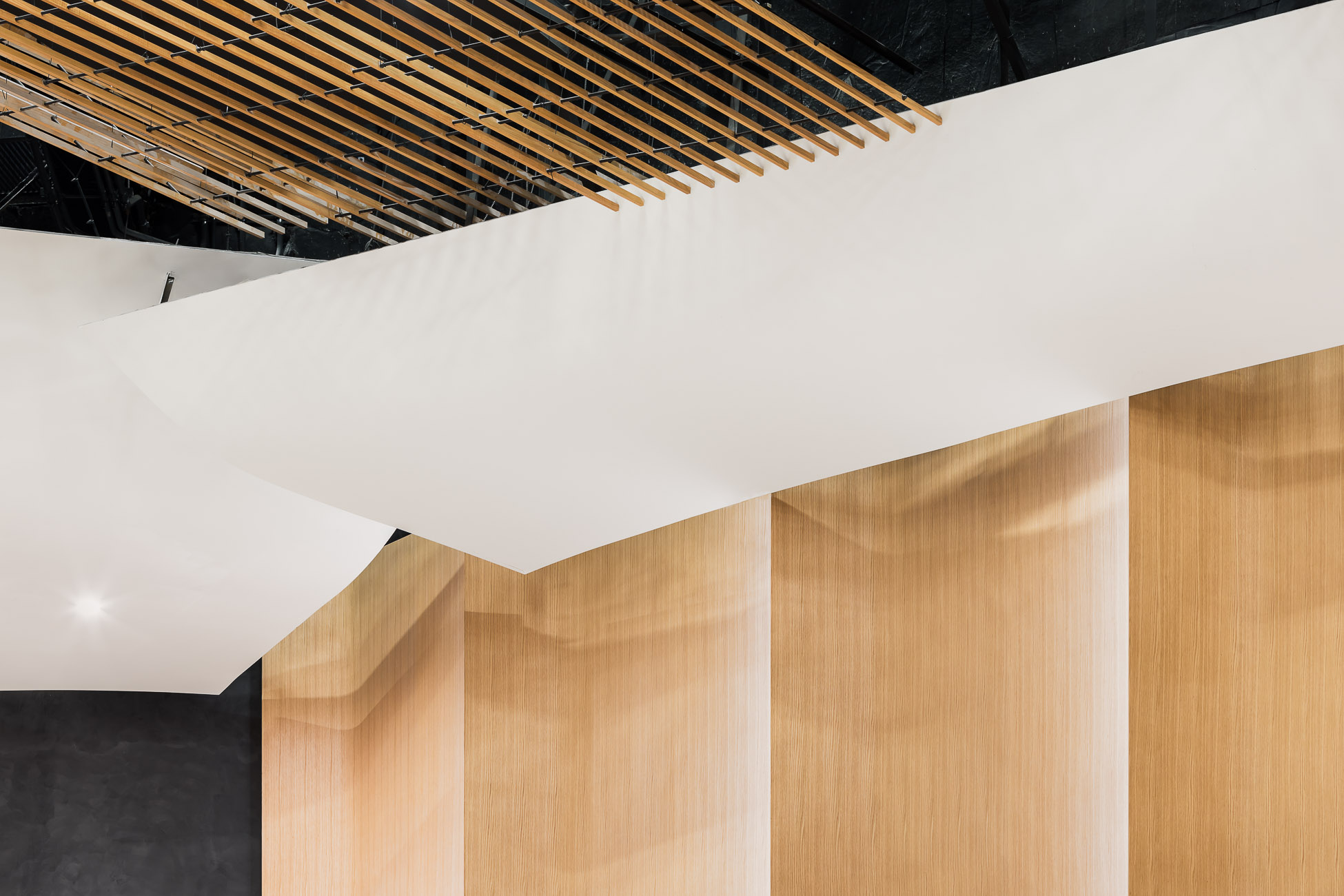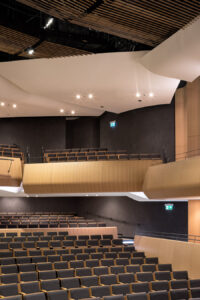
One Facility, Multiple Uses: How to Manage Competing Needs without Compromising Acoustics
Over the last two decades, design requests have adapted to new needs. Before this, older building design projects centred on a primary function. A client would look to design an educational facility or a performing arts venue for a narrow range of uses. Today, demand for multipurpose venues is increasing. In fact, single-purpose venues are becoming rarer. The economics of running a venue almost always demands many sources of revenue, and a variety of groups using the space in different ways.
Maybe the question we should ask ourselves is which performance spaces are NOT multipurpose. Multipurpose venues serve a wide range of programs to many people. Think of a community centre that offers everything from sports lessons to music classes to performances, meeting spaces and a library. Many of these facilities are booked solid, providing the steady revenue generation with the opportunity to expand. Often these spaces can have competing sound levels as well as uses.
Acoustically, however, multipurpose venues can pose significant challenges. There is no one-size-fits-all approach. The venue’s acoustics will differ depending on the activities taking place—a lecture in a hall will be different than a choir practice. Ignoring this can limit a venue’s options because bad acoustics can be uncomfortable to your audience, performers, and other users.

Balancing Acoustics Needs in Multipurpose Venues
Ideally, we would be able to meet the acoustical needs of all uses of the facility. However, it’s very difficult to accommodate 10 different uses in one space to the same high standard. In fact, it’s not possible because whatever we would design to optimize acoustics for one use, might be detrimental to another.
Aercoustics faced this challenge when designing Lazaridis Hall at Laurier University in Waterloo, Ontario. The 1000-seat auditorium also functions as a 400-seat lecture hall and is used for much more: including a variety of performances, galas and convocation ceremonies. With so many competing needs, the project sponsors were asked to narrow down the top priorities so the acoustics could be optimised to meet those needs. If not, the space may have had good acoustics for a lecture but be unsuitable for a musical performance. In this example, the reverberation time and by extension, speech intelligibility varies significantly in the design for these two uses. The client’s decision was to focus on lectures and convocation ceremonies.
Tips when Designing Multipurpose Venues:
There are some things to consider when designing a multipurpose venue. They are:
- Prioritize: In most cases, a space can be optimized for only one or two key uses. Determine the primary and secondary uses, followed by potential tertiary ones. Decide with all the relevant stakeholders, what the focus of the venue should be. For example, the Aga Khan Museum auditorium’s primary use is for natural acoustics of eastern instruments. The secondary priority is the use of amplified musical performances, and then film screenings is the third programming focus.
- Consider the use of fixed reflectors: These provide early reflections of sound to the audience while the careful placement of absorption/diffusion helps to scatter sound and minimizes late energy reflections. This, combined with a low background sound level, helps to optimize the speech intelligibility in the space.
- Select the right finishes: Strategic placement (and removal) of acoustically absorptive surfaces can impact acoustics. The reverberation can be modified by changing the types or the location of finishes in the room, which introduces or removes acoustic absorption from the space. It is important to remember the audience also introduces acoustic absorption into the space so the reverberation will naturally decrease when a larger number of people are in the room.
- Determine if you need natural acoustics. Spaces can almost always be designed to function with an electronic sound system. Depending on the intended use for the space, natural acoustics may also be an option. Natural acoustics can be desirable as this provides a very direct and immediate connection with the audience. That said, the best solution is not to have natural acoustics. There are venues where the required uses are so varied and equally important, that the most efficient and economical way to solve this is with a completely electronic solution.
- Go for adjustable acoustics: This can change the sound in a room to better serve different uses. Commonly in the form of retractable absorptive surfaces like curtains or banners, this can reduce or increase the reverberation of the space to help with intelligibility, clarity, and envelopment. For example, at Lazaridis Hall, curtains on the second floor can be pulled into the room to reduce the reverberation time for some types of music or to increase speech intelligibility for a lecture. This needs to be weighed up against the operation of the venue for non-professional users, as venues short on staff are likely to be better operationally without the variable nature. Spending money on variability that doesn’t get used or doesn’t work is wasted money.

For projects like Lazaridis Hall, our design team used a proprietary tool to design reflection patterns from surfaces such as the ceiling and balcony faces. The NURB Ray Analysis Tool (NRAT) integrates directly into 3D modelling software. It enables quick evaluation and adjustment of reflection patterns to optimize the useful acoustic energy sent to listeners. This approach is applied to other halls where multipurpose acoustic uses are desired, to compare and evaluate the results of different configurations.
Lazaridis Hall is not only used for its originally intended academic purposes, but also for musical performances, convocations and recently a fundraising gala in support of the music department. It has become a landmark in the city as a venue for the community to host concerts, films, lectures, and special events. And it won’t be the last. Whether it be for space or money, demand for multipurpose venues will only increase as land becomes harder to find, cities become more populated and land and construction costs increase.
